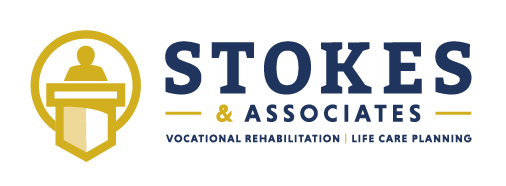Costing Techniques Lessons from the Life Care Planning Summit
The International Association of Life Care Planners (IALCP) is the Life Care Planning section of the International Association of Rehabilitation Professionals and arguably one of the most active life care planning professional organizations. For 22 years, the IALCP has facilitated Life Care Planning Summits to foster collaboration and consensus on standards of practice in the field. For example, in May of 2022, seven representatives of Stokes & Associates participated in the most recent Summit, which intended to develop a position statement regarding the presentation of charges or costs in a life care plan. Over time, similar Summits have resulted in the seminal resources we rely on as life care planners, including the Consensus and Majority Statements.
In preparation for the Summit, Dr. Jamie Pomeranz and Dr. Nami Yu collected survey data from active life care planning professionals regarding typical costing strategies for generating life care plans. Data was collected via Survey Monkey, and 264 life care planners completed the survey (80% response rate). Results of the survey were presented at the 2022 Summit and recently published in the Journal of Life Care Planning (Johnson, C.B., Pomeranz, J.L., Yu, N.S., Robert, E., Davis, E., Woodard, L. & Penilton, D. 2022 Life care planning summit: Costing techniques, survey results and development of a costing framework in support of the life care planning specialty. Journal of Life Care Planning, 21(1), 31-68).
Below are some significant findings:
Overall, respondents were quite experienced, with 64% writing life care plans for ten or more years and 39% for over 20 years.
64% of the sample reported a Certified Life Care Planner (CLCP) as the primary certification related to life care planning; Certified Nurse Life Care Planner (CNLCP) 22%; Certified Rehabilitation Counselor (CRC) 21%, and Certified Case Manager (CCM) 18%.
42% of life care planners obtain fees and prices by telephone 81% to 100% of the time.
62% of life care planners use a database to determine costs 81% to 100% of the time.
Most life care planners (81%) use a combination of sources to determine costs 81% to 100% of the time.
93% of life care planners identify the sources of the costs in their plans 80% to 100% of the time.
43% of life care planners who use databases for costs report the 75th percentile; 22% report the 80th percentile.
64% of plans do not rely on Medicare fee schedules to determine costs.
51% of life care planners consider prices less than 12 months old valid.
As life care planners, learning that we generally agree with our colleagues regarding actual best practices was encouraging and validating. The most current edition of the Standards of Practice for Life Care Planners (2022, Journal of Life Care Planning, 20(3), 5-24) provides strong guidance regarding general principles and minimum standards for clinical practice. However, as evident from the survey results, there is much room for interpretation of the guidelines. Stokes & Associates strives to employ peer-reviewed and generally accepted methods in the field. The published results from this most recent survey strongly support our company-wide methodology for generating life care plans.
